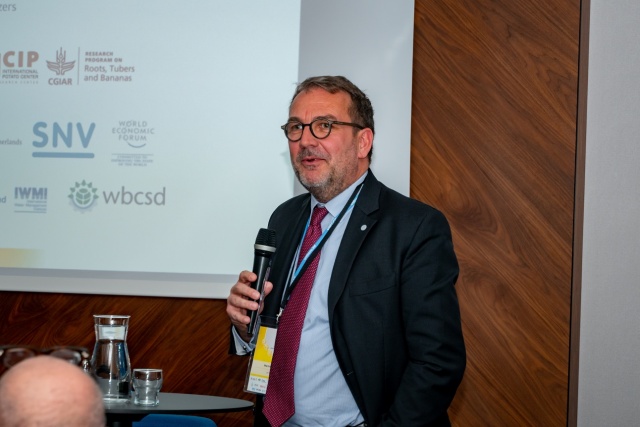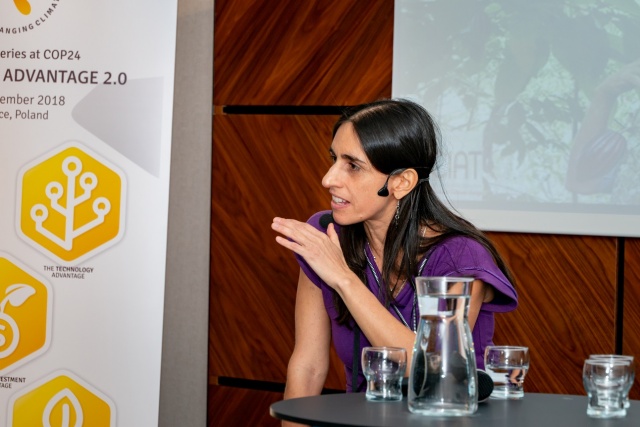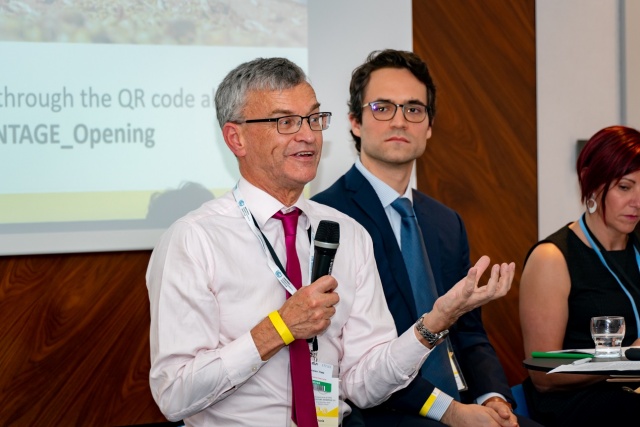Transforming food systems under a changing climate: building consensus on action

The debate on agriculture in UN climate change negotiations is shifting from setting the agenda towards building consensus on an action plan. The Agriculture Advantage 2.0 event series at COP24 seeks to inform priorities for action.
The theme of agriculture inhabits a growing space within UN climate negotiations, for instance through the Koronivia Joint Work on Agriculture. Actors involved in the climate negotiations have started to recognize the importance of agriculture in addressing climate change adaptation and mitigation, and the necessity of discussing this issue on an international platform.
Last year, an alliance of organizations active in the agriculture sector connected with negotiators and national and international organizations through an event series on the potential for adaptation and mitigation in and through agriculture during COP23. In its second iteration, Agriculture Advantage 2.0, the series builds on last year’s experiences, emphasizing the need to move from agenda setting to action.
A system-wide agricultural transformation

Victoria Hatton of the New Zealand Ministry for Primary Industries speaking at the opening event of the Agriculture Advantage 2.0 event series at COP24. Photo: Barbara Ogrodniczak
“Transformational change… is a complex challenge, a wicked challenge. It calls for a systems thinking approach.”
Victoria HattonDuring the opening event for the series, keynote speakers and speakers from upcoming events in the series shared their diverse perspectives on what kinds of changes are needed for a transformation of food systems. Victoria Hatton, from the Policy Advantage event, emphasized the need to think about food production from a systems perspective and to address the different elements of the food system together. Evan Girvetz from the CSA Investment Advantage event agreed, and argued that climate-smart agriculture (CSA) is a promising way forward:
“We need comprehensive actions across different sectors—not just agriculture—to achieve the transformation needed. CSA can be a catalyst for change across sectors, including finance, policymaking and governance.”
Evan GirvetzAgriculture holds the key to time
“We need to remind people that we are not talking about fancy policy options. We are talking about what agriculture can do for us. It holds the key to time. And time is key these days. The alternative is so terrible that we cannot stop talking about this. We must build the measures now.”
Martin Frick
Martin Frick, Senior Director for Policy and Programme Coordination at UNFCCC, urges action on climate change in food systems. Photo: Barbara Ogrodniczak
In October this year, the IPCC released a Special Report on Global Warming of 1.5°C, emphasizing the crucial impact of the coming decade on the levels of warming the world will experience. With time against us, now is the time to think about low hanging fruit. Viridiana Alcantara Cervantes, from the Soil Advantage event, pointed to one such option:
“Soils are the foundation of our food systems. And they can contribute an impressive 10% to the emissions reduction necessary while also contributing to adaptation goals.”
Viridiana Alcantara CervantesA system-wide transformation needs to…
… leverage finance
“One of the key ingredients for scaling up CSA is unlocking finance by de-risking agriculture.”
Godefroy GrosjeanIn order to leverage finance, one way forward is to bring international and national funders together to get a clear idea of what is needed for effective adaptation and mitigation in agriculture. Policy actors need to remove institutional barriers to trigger policy advantages and investment advantages simultaneously. Investments are urgently needed, as an estimated USD 205 billion investment is necessary to achieve adaptation to climate change in the agricultural sector.
This need, however, does not have to be a burden. By better understanding the advantages of food system finance, system elements such as soil or climate-smart agriculture be an opportunity for economic wealth in additional to ecological and social wealth.
… be differentiated
“This is truly a story where one size fits all is not going to work. We need to think about differentiated pathways for different types of farmers to improve their livelihoods and climate-smartness.”
Ana Maria Loboguerro
Ana Maria Loboguerro, Head of Global Policy Research at CCAFS, outlines a 6-part plan for transformation of food systems under agriculture. Photo: Barbara Ogrodniczak
One crucial challenge in transforming the agricultural sector is its context specificity: different contexts and different types of farmers call for different solutions. Ana Maria Loboguerrero suggests understanding these pathways as existing in a three-dimensional space defined by three axes: culture, productivity and the environment. This approach, developed by Lindsay Stringer and colleagues at University of Leeds, allows differences to be explored and addressed appropriately.
… and tech-forward (but people-focused)
Technological advantages can help us shift from incremental to transformational change in food systems. But while technology is an essential element of the way forward, it is not a silver bullet, and comes with its own challenges:
“Technology on its own does not take us very far; rather it is one piece of the puzzle. When using these new technologies what we need is time, so we are hitting a moving target.”
Graham Thiele
Graham Thiele, Director of RTB, elaborates on the opportunities and challenges of using technology to address climate change in agriculture. Photo: Barbara Ogrodniczak
Furthermore, it is also important not to forget that ultimately, technologies are used by people and require mindful incorporation, in line with the differentiated pathways that need to be identified for different contexts and types of farmers.
“We should not forget that technologies are used by people. The technology does not just spin off. It is people that need to implement the technology.”
Dean CooperThus behaviour change among farmers and consumers is equally important. Communication will be a crucial ingredient for that change:
“The world is tired of hearing about the devastating impacts of climate change. We want to focus on the benefits and joy of climate action in agriculture and for smallholder farmers.”
Brian ThomsonRead more:
- Briefing: A 6-part action plan to transform food systems under climate change, available in 2 formats: Exposure story with animated graphics | downloadable Info Note
- Koronivia submission: Submission from the CGIAR System Organization, International Centre for Tropical Agriculture and the World Bank, in response to Decision 4/CP.23
- Journal article: Agriculture in a changing climate: Keeping our cool in the face of the hothouse
- Journal article: Transformation in Practice: A Review of Empirical Cases of Transformational Adaptation in Agriculture Under Climate Change
- Global Commission on Adaptation report: Feeding the World in a Changing Climate: An Adaptation Roadmap for Agriculture
